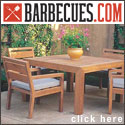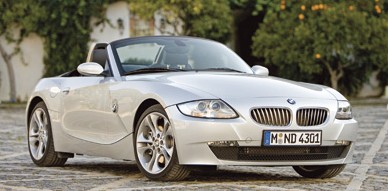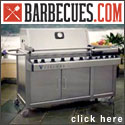



Back Country Journal
Presents:
BMW Z4 Roadster and Coupe Review (2008)
| BMW 1 Series | BMW 3 Series | BMW 5 Series | BMW 6 Series | BMW 7 Series |
| BMW Z4 | BMW X3 | BMW X5 | BMW X6 | BMW M Series |

2008 BMW Z4 ROADSTERS AND
COUPE:
Two seats. One road. No
waiting.
Woodcliff
Lake, NJ – October 1, 2007…Forty years
ago, American driving enthusiasts were in the
midst of a great debate taking place in car
magazines and
at car club meetings. Precipitated by
mass-production carmakers using the term "sports car" to market what were essentially
sedan-based products to the burgeoning youth market, the debate centered on defining
what an authentic sports car should be.
In
the end most of the
debaters
agreed it
was easier to determine what was not a sports car
than to
agree upon a hard-and-fast definition of what constituted a real sports
car.
But even at first glance, the most ardent
automotive purist would declare
that the 2008 BMW Z4 Roadsters and Coupe
are authentic contemporary interpretations of the classic sports and Grand Touring car concepts.
The
'08 Z4 lineup consists of three models:
·
3.0i Roadster - powered by a 3.0 liter inline
6-cylinder engine
producing
215 hp/185 lb-ft. torque
·
3.0si Roadster - powered by a 3.0 liter inline
6-cylinder engine
producing
255hp/220
lb-ft. torque
·
3.0si Coupe - powered by a 3.0 liter inline
6-cylinder engine producing 255hp/220
lb-ft. torque
Each features firmly planted suspension,
standard run-flat performance tires and state-of-the-art stability
electronics
anchored in remarkably rigid Coupe and Roadster body/chassis structures
topped-off by a unique
and captivating design.
Inside, the
driver can enjoy the Z4’s innate sportiness while savoring extensive
comfort
and convenience features.
New
features for 2008 include:
•
Space
Gray Metallic replaces Silver Gray Metallic
•
Sport
Package on Z4 3.0i Roadster now includes staggered fitment 18-
inch
wheels and
tires, replacing the former 17-inch wheels
•
Optional
HD Radio is now priced at $350, previously $500
The
Z4 3.0i and 3.0si Roadsters are pure in their form and function with a
long
hood, two seat placement, easy-to-open cloth top, short decklid and
six-cylinder power. The Z4 Coupe 3.0si is the Series’ first closed-body
model.
The new Coupe encloses its two seats and a larger cargo area in a
graceful
fastback body that retains the Z4’s unique aesthetic character while
looking
expressively new.
Performance
& efficiency
• The
N52 6-cylinder inline engine –
• Magnesium/aluminum
composite construction
• Valvetronic
variable intake-valve lift
• Electric
water pump
• Volume-controlled
oil pump
• Roadster
3.0i – 215 hp/185 lb-ft. torque
• Roadster
and Coupe 3.0si – 255 hp/220 lb-ft. torque
• Optimized final
drive
ratios, numerically
higher to further improve acceleration (Coupe ratios differ from those
of
Roadster 3.0si)
• 6-speed manual
transmission
standard on all
models
• 6-speed automatic
transmission optional on
all models with:
• Shift
paddles on steering wheel
• Direct
Selection of Manual shift mode via paddle downshift
• Sportier
overall programming
Handling,
ride & braking
• 17-in. wheels and
performance tires
standard on all models; 18-in. differentiated front/rear sizes as part
of Sport
Package on all models
• Dynamic Stability
Control
system
incorporates the following braking functions –
• Brake
Fade Compensation
• Brake
Standby
• Brake
Drying
• Start-off
Assistant
• Modulated
ABS function, for smoother operation
Exterior
design & function
• Front
bumper assembly with large air intakes and rectangular foglights
• Stainless-steel
exhaust tips (3.0si models only)
• Exciting
metallic paint colors
Ergonomics,
luxury & convenience
• Glove
compartment: silicon
damper for
smoother opening/closing, and illuminated
• Rubber mats at
bottom of
door pockets
• Steering-wheel
spokes
trimmed in galvanic
material in all versions
• Automatic climate
control
(optional 3.0i,
standard 3.0si models) has galvanic trim for enhanced appearance,
rubber
surfaces for improved tactile feel
• Adjusting wheels
for air
vents also have
rubber touch tactile surfaces
The Z4
Roadster body/chassis structure:
high rigidity
enhances handling
&#
8220;The
correlation between chassis rigidity and
athletic handling has long since ceased to be a mystery,” wrote Car and Driver in its April ’02 issue,
“one is a prerequisite for the other.”
When BMW’s
structural engineers were developing
the Z4, they created a body/chassis structure with exceptional
stiffness for a
roadster. The team achieved 21 Hertz [1] –
truly outstanding for a
roadster, and close to the 25-26 Hz of today’s BMW sedans. To attain this remarkable rigidity, the
engineers incorporated a number of special structural features,
including
Y-form front structural members, ultra-strong side sills and underbody,
“thrust
plates” that add rigidity to the front and rear suspension attachment
points,
and extensive use of high-strength steels. To
save weight and help optimize front/rear
weight distribution, the Z4 hood is of aluminum.
Rollover protection
is provided by an exceptionally
strong windshield
frame and two rollbars mounted
behind the seats.
Softtop:
intelligent
design, choice of manual or power
The Z4 Roadsters offer manual and power softtops, the
latter
available on both models as a stand-alone option or in the Premium
Package.
Standard manual
top. Intelligent design and
engineering result in
easy operation and excellent functionality:
•
1-hand release/lock.
A
centrally positioned single-hand grip
releases the top from the windshield header or locks it in place.
•
Top header becomes cover. Thanks
to its “parallel” folding sequence, the
top’s forward header remains upright as the top folds, and then serves
as the
cover for the folded top. This makes folding or raising the top
essentially a
1-step process. The header covers the
folded top and is flush with the body for a clean appearance.
•
Easy operation.
Gas-filled
struts reduce the effort required
to lower and raise the top.
•
Heated glass rear window requires no
periodic replacement and preserves rearward vision in cold or inclement
weather.
•
Aluminum and magnesium frame for low
weight and inertia.
•
Variable storage compartment. As in other open-body BMWs, the softtop
compartment
is adjustable for additional trunk space when the top is up.
Fully automatic
power top. To lower the top, the user
simply presses a
button on the center console. The top
unlatches electrically from the header and folds down. Raising the top
is just
as easy; both occur lightning-fast.
The
power top includes all the features of the standard one, plus &#
8211;
•
Interior
lining for enhanced weather protection, reduced wind noise inside
• Choice of three
colors—Black, Gray and
Beige
The
Z4 Coupe body/
chassis structure:
the
ideal platform for razor-sharp
handling
Reporting
the Coupe’s debut at the Geneva Automobile Salon, Switzerland’s
authoritative Automobil Revue described the design in
its February 1, ‘06 issue: “The Z Coupe embodies the new BMW
design in its
purest form. It is characterized by round, flowing lines. Curved, long hood, pronounced wheel arches and
a “trough“ down the roof’s center are classic sports-car design cues,
but here
they’re newly mixed in the BMW way.
The
roof flows in an arc to the rear window and on to the vertical rear
cutoff
point.“ America’s Automobile
(December ‘05) lent this note of opinion: “There&#
8217;s no
controversy over the way the forthcoming BMW Z4 Coupe looks. It’s stunning, and it’s heading to showrooms
next summer.“
In
its lower-body contours, the Coupe corresponds mostly to the Z4, with
its
refined front end and hood lines; long-hood, cabin-back proportions;
and double
beltline in profile view. In particular,
the lower, stylistically primary beltline begins above the outer
headlight,
curves upward over the wheels and then downward into the door, and
“hikes“
sharply upward again, finally heading downward to conclude at the rear
edge. Because the Coupe&#
8217;s upper beltline
has a
visually longer continuity as it extends on past the rear-quarter
window with
itstraditional BMW “Hofmeister kink,“ the lower
one even
more boldly evokes the fender line of classic Grand Touring coupes.
Even
stronger in its aesthetic impact is the fastback roofline. For one thing, in cross-section its center
depression or “trough“ is reminiscent of certain GT coupes of the
Italian
coachbuilder Zagato in the Fifties and later.
In
profile view, it flows in a line parallel
to the side windows’ top edge, then continues on down to meet a crisp,
stand-out
cutoff point that forms a rear spoiler. Then
it concludes at the bumper as the bottom edge of a rear hatch.
This
hatch, including the entire roof from the rear window’s top edge to the
bumper,
opens wide and high to provide excellent access to a relatively roomy
cargo
area that can accommodate two golf bags.
A cabin for
two
In
its interior design, the Coupe adopts the primary design themes and
materials
of the Roadster 3.0si. BMW’s “High Performance&#
8220; leather upholstery is
standard;
the seats, upper door-panel inserts, console-side kneepads and center
armpad
are in this leather and it is available in four color schemes: Saddle
Brown, Black,
Dream Red/Black and Beige.
Brushed-aluminum
trim highlights the dash and console; Poplar wood trim is available at
no extra
cost in Light or Dark tone. The Coupe
features a cloth headliner, in Gray or Beige according to interior
color
scheme, and the A-pillar trim is also distinct from that of its
Roadster
counterpart. The available Extended
Leather upholstery is described under
Options .
As
in the Roadster, sport seats, with prominent cushion and backrest side
bolsters
to support occupants during energetic driving, are standard. Their standard adjustment is 6-way manual;
available in the Premium Package or as a stand-alone option is 8-
way
power
adjustment, with memory for the driver’s seat. M sport seats, also
described
under Options, are available in combination with the Sport Package.
The
steering wheel has manual tilt/telescopic adjustment. A
contemporary instrument cluster, with
white-on-gray analog speedometer and tachometer, includes LED
indicators in the
dial faces and between the dials; fuel and temperature gauges are set
into the
tachometer face.
Another
amenity shared with the Roadster 3.0si is the Z4 Series’ 10-
speaker
premium
audio system, an AM/FM/CD/MP3-capable unit featuring –
• Audiophile-quality
speakers throughout, including two 160-mm subwoofers incorporating
Carver
long-stroke technology
• A
powerful Carver amplifier and 7-band Digital Sound Processing
• An
FM reception-enhancing diversity antenna system.
Last year the
Z4 Series became the
first European cars to win the coveted THX Certification for their
premium
audio system. THX Ltd. was established
in 1983 by filmmaker George Lucas, and has taken its mix of technology
and
certification programs to emerging entertainment media, including home
theater
systems, DVDs, video games and high-performance automotive audio
systems. THX engineers worked closely with
BMW to
analyze Z4 models’ cabin acoustics, speakers and other audio components
to
determine whether they perform to THX standards. They
did; the result is a THX Certified
Premium Sound System that is designed to deliver a music experience as
the
artist intended.
In
the closed-body environment of the Coupe, this system promises even
more
enjoyable listening. It includes a reception-enhancing diversity
antenna
system, and an iPod adapter kit is available to broaden the range of
audio
inputs.
BMW’s
advanced N52
6-cylinder concept
Most vehicle
manufacturers’ 6-cylinder engines are in the V-6 format,
whose compactness is advantageous for small or midsize cars with
front-wheel
drive. By contrast, BMW’s inline
6-cylinder engines are brilliant for their smoothness and sound, and
BMW customers
as well as professional auto critics have come to treasure them for
these
attributes. BMW has retained this inline
format while developing it toward reduced weight, more compact
dimensions – and
even more brilliant performance, smoothness and sound. An
increase in fuel efficiency and even
tighter control of emissions were also set as goals for the engine.
The result of
this quest is a generation of 6-cylinder engines, called
N52. Compared to its predecessor, the
M54 engine family, the N52 achieves notable progress on all fronts (N52
3.0-liter of 3.0si models vs. previous M54 3.0-liter):
•
Greater power, 255 hp vs.
225 hp – a very
impressive 85 hp/liter.
•
Greater
torque, 220 lb-ft.
vs. 214, and even
stronger torque delivery across the broad range of engine speeds.
•
Higher
revving ability. The
&#
8220;redline”
is 7000 rpm, vs. 6500 for the M54.
•
Superior fuel
efficiency. Despite the new
EPA testing procedures for 2008, both
3.0si models (Roadster and Coupe) with automatic transmission are
EPA-rated at
19 mpg city/28 mpg highway, up slightly from their predecessor model’s
19/27.
•
Reduced
weight – 22 lb. less. Had BMW engineers evolved the previous engine
to meet their goals, it would have weighed 52 lb. more than the N52
engine
does.
•
More compact – Because there
is just one
external drive belt, vs. the previous two, overall engine length is
about an
inch shorter.
Valvetronic
variable valve lift.
This
exclusive, patented innovation appears in the N52 in refined form. Variable valve lift is a step
beyond variable
valve timing – which this and all other current BMW gasoline engines
also have. Valvetronic varies lift to a
far
greater
degree than other variable-lift systems; indeed, this concept varies
lift so
extensively that it replaces the traditional engine throttle; engine
breathing
is controlled by the valves rather than a throttle or throttles.
The
Valvetronic mechanism sits atop the intake valves. Each
of the engine’s 24 valves is actuated as
the camshaft lobe deflects a finger-type rocker arm. On
the intake side, there is an additional
element between the camshaft lobe and rocker arm, called an
intermediate
follower.
Upon contact
by the lobe, this follower actuates the rocker arm and, in turn, the
valve. The
follower is positioned by an eccentric shaft that a servo motor rotates
in
response to the driver’s accelerator-pedal movements; the eccentrics on
this
shaft determine each intermediate follower’s pivot point and thus
varies the
valve lift.
Here are the
highlights of Valvetronic:
•
Intake valves
assume function of throttle.
Engine
breathing – air intake – is controlled by varying valve lift. The driver’s foot gives the commands; valve
lift varies accordingly. At minimum
lift, the engine is idling or decelerating; at maximum lift, it
delivers full
power.
•
Greater
efficiency.
As
a throttle closes, it imposes a restriction that incoming air must
snake
around. This causes &#
8220;pumping losses,”
which take a greater proportion of engine power at lower speeds. By eliminating the throttle,
Valvetronic essentially eliminates pumping losses.
•
More
spontaneous engine response. Again,
because there is no conventional throttle.
•
More power.
High
valve lift contributes to high power output. With
conventional valvegear, there’s a limit
to how high valve lift can go without degrading low-speed operation. With Valvetronic, lift is tailored precisely
to all operating conditions, and is extra-high at the top end. The 3.0si engine’s power peak (255 hp) comes
at a relatively high 6600 rpm. Yet low-
to medium-speed operation is not compromised.
• &#
8220;Fatter”
torque curve. Not
only does the N52 engine produce more torque than its predecessor;
torque also
peaks at a lower engine speed, 2750 rpm vs. the previous 3500 rpm. This means stronger low- to midrange response.
•
More refined
engine operation. Light-load
operation is especially smooth because valve lift is low.
• Low friction,
precision components. Every
“rubbing point” in the Valvetronic mechanism is not a rubbing
(friction) point at all. Instead,
low-friction rollers transmit the motion: from cam lobe to intermediate
follower, follower to rocker arm, eccentric shaft to follower. The follower itself is a precision component
in this higher-rpm evolution of Valvetronic. As
before, zero valve clearance is maintained
hydraulically to ensure quiet operation, though by a different
mechanism.
How
Valvetronic has evolved. As dramatic as these fundamental
advantages
of Valvetronic are, with the N52 engine they become even more
significant. Though highly technical and
detailed, the
evolution of Valvetronic can be understood in these broad terms:
•
Maximum
engine speed increased by 500 rpm.
This was
enabled by making Valvetronic’s reciprocating parts more rigid.
•
Maximum
intake-valve lift increased from 9.7 mm to
9.9 mm, which contributes to the increase in maximum power output.
•
Greater
maximum intake-valve acceleration. Less time is
spent opening and closing the
valves; thus they are effectively open longer, further reducing pumping
losses.
•
Phasing of
the two intake valves. Starting from
minimal intake-valve lift
(i.e., idling), an increase in engine load causes the lift and timing
of intake
valve 1 to increase faster than that of valve 2.
At
its maximum, this phasing has valve 1
lifting 1.8 mm more than valve 2; at about 6 mm, the two valves are
again “in
synch.” This achieves an asymmetric
distribution of the fuel/air mixture that enhances fuel economy under
low-load
driving conditions.
Improved
combustion chambers. Subtle
refinements to the combustion-chamber shape conspire with the
intake-valve phasing to create more stable combustion, with benefits to
fuel
efficiency and emission control.
Further
evolved VANOS. Double VANOS variable intake- and
exhaust-valve timing is a familiar feature of all current
BMW engines. The range over which
intake-valve timing can be varied has been increased by 10&#
730;, achieving
yet
another de-throttling effect.
3-stage
induction system. Previous
Z4
engines had a 2-stage (or dual-resonance) system: one intake-
path
length for
lower rpm, the other for higher rpm.
This
system further optimizes the engine’s power delivery by providing an
additional
“middle” stage. Electrically switched, the three stages are:
• Low-speed: idle-
3250 rpm
• Medium-range:
3250-4500 rpm
• High-speed: 4500-
7000 rpm.
(This feature
is
present only on the Z4 3.0si engine; the 3.0i engine has a single-
stage
intake
manifold.)
Higher
fuel-injection
pressure, up from 3.5 to 5 bar (51.4 to
73.5 lb/sq in.), results in an improved injection spray, helping reduce
raw
hydrocarbon emissions in a cold engine.
Engine
electronics. The number of
variables (inputs) feeding into the engine’s electronic management
system has
increased significantly; a completely new system was developed. Among
many
innovative details, the basic ignition and valve-timing functions are
duplicated. The first part was optimized
for fuel consumption and emissions; the second part was determined
according to
pure driving parameters. Depending upon how perfectly the engine is
running at
any time, control interpolates between the two strategies. Under ideal conditions, the engine always runs
with its lowest fuel consumption. In
case of poor fuel quality or unfavorable environmental conditions, the
control
parameters prioritize driveability.
Magnesium/aluminum
composite construction
Although the
direct customer benefits of this unique and pioneering construction are
subtler
than those of Valvetronic, this is an important innovation – a world’s
first in
modern times and exclusive to BMW.
Structurally,
the N52 engine block consists of three major castings:
Upper
crankcase
(magnesium alloy). J
oining the
bedplate at the level of the crankshaft (main) bearings,
this too is a weight-saving casting. It is mounted onto the bedplate
from
above.
Insert
(aluminum
alloy). Forms the
cylinders and their coolant passages. Whereas
the previous engine has an aluminum
block with cast-iron sleeves as the cylinders’ working surfaces, this
insert is
of silicon-impregnated aluminum (Alusil). Silicon
particles are thus cast into the
block; a “soft honing” machine removes just enough of the aluminum to
leave the
crystals as the ultra-hard cylinder surfaces. In
this sense, the N52’s block construction
resembles that of current BMW V-8 and V-12 engines, though these blocks
are
all-Alusil.
How it goes
together. First,
the aluminum insert is cast by conventional methods. Then, during a
recently
developed die-casting method, the magnesium upper shell shrinks onto
the insert
while cooling; structural rigidity and stability are ensured by
interlocking
ribs where the two castings meet.
In the next
step, the upper crankcase, consisting of magnesium shell and
aluminum insert, is mounted onto the magnesium bedplate from above. The sintered-steel main bearings’ lower halves
are in place in the bedplate, the upper halves in the upper crankcase. After the bedplate and upper crankcase have
been bolted together, a liquid sealing compound is injected into a
groove on
the contact surface between the two components.
Special
aluminum bolts are used to attach
parts, such as the engine mounting brackets, to the magnesium/aluminum
castings.
As in all BMW
engines for decades, the cylinder head is of aluminum;
however, the head of an inline 6-cylinder engine must be cast with
great
precision because its relatively great length implies relatively large
contraction as it cools after casting. The
casting process used here is called “lost-foam”; this process, which
employs a
polystyrene “dummy” of the head to form the mold into which the
aluminum is
poured, results in an extremely precise casting.
Other
weight-saving
materials. Though
the magnesium/aluminum composite crankcase construction is the
most sensational example, other materials and production innovations
also help
pare weight from the N52 engine.
The
second most productive material innovation was the adoption of hollow
camshafts, which save a remarkable 2.6 lb. Beginning
as steel tubes, the camshafts are
shaped in a hydroforming procedure, subjected from the inside to a
water
pressure of 4000 bar (58,000 lb./sq in.) against outer forms to achieve
the cam
profiles. All this takes place in a cold
state – nothing melts – and as a final step the cams are polished to a
finish
quality of 1/1000 mm.
The engine’s
camshaft cover is of weight-saving magnesium.
And
the chain camshaft drive, a
high-durability, low-maintenance feature of all current BMW engines,
has an
aluminum chain tensioner that also saves weight. Instead of being a
separate
casting, the camshaft drive’s housing is integrally cast into the
magnesium
structure, eliminating a production step and sealing components. As one final weight-reducing element, the
exhaust headers’ flanges are formed from 2-mm-thick steel,
significantly
lighter than the 12-mm flanges used previously.
Electric
water pump. A conventional engine water (coolant) pump is
driven by a belt at a speed directly proportional to engine rpm. This innovation is electrically driven and
electronically controlled according to the engine’s coolant and oil
temperatures at any moment. Thus it runs
only as much as needed, and in doing so consumes a maximum of 200 watts
vs. up
to two kilowatts (10 times as much) for a conventional pump. The electric pump has numerous tangible
benefits:
• By
requiring less power, contributes to the engine’s increased power
output.
• Faster
engine warmup, because it doesn’t circulate coolant when the engine is
cold.
• By
eliminating an external drive belt, makes the engine shorter.
Variable-
volume
oil
pump.
Conventional
oil pumps, too, deliver oil in direct proportion to engine speed. To supply pressure to the VANOS system (which
employs oil pressure to rotate the camshafts and thus vary valve
timing) at all
speeds and temperatures without excess capacity at high engine speeds,
BMW
engineers developed a new type of oil pump.
By
varying the output of its pump element
according to engine oil pressure, this pump always delivers sufficient
pressure
to lubricate the engine and operate VANOS, yet never pumps more oil
than is
necessary. Thus it –
• Contributes
to the engine’s increased power output, by requiring less power from
the
engine.
• Doesn’t
require a bypass to divert excess flow, which can be up to 80% with a
conventional pump. This also avoids
possible excess oil temperatures and oil foaming.
Oil/coolant
heat exchanger. Another
feature that speeds engine warmup; during this phase of
operation, it transfers heat from the coolant to the oil circuit. Under conditions of high engine power and high
oil temperatures, it performs the reverse, transferring heat from the
oil
circuit to the coolant, from which the engine cooling system then
removes
excess heat.
Transmissions:
all choices are 6-speeds
All Z4 models
come standard with a 6-speed like the one Motor Trend
praised in its August ’04
issue: “Like the engine,” commented the magazine, “the gearbox is a
sweetheart. Said one editor, &#
8216;The shifter
has
that
positive, spring-loaded feel.’ Another wrote, ‘It snicks into its gates
with an
oiled authority.’”
There&#
8217;s also
good news for those who like their shifting automated – at
least part of the time. The Z4 offers a
6-speed automatic that has an efficient torque converter and shift
programming
for improved responsiveness, actually operates with fewer internal
clutches,
and can reduce fuel consumption, particularly at cruising speeds when
6th gear
is in frequent use.
As with other
current BMW automatics, the STEPTRONIC feature offers
drivers a choice of Normal, Sport and Manual modes. The
Sport mode, in which shifts occur at
higher engine speeds, is engaged by moving the lever leftward from
Drive; the
Manual mode is engaged when the driver manually chooses a gear by
tipping the
lever forward (for downshifts) or rearward (for upshifts).
In the Z4
models, this transmission has two further features, both
conducive to sporty driving:
•
Shift
paddles on steering wheel.
Analogous to the
shift lever, pulling the
paddle(s) toward the driver produces an upshift; pushing forward gets a
downshift.
•
Direct
Selection of Manual
mode. If, while
driving in D, the driver manually downshifts via paddle or shift lever,
the
Manual mode engages. But if the driver
makes no further manual shifts within 15 seconds, the transmission
returns to
automatic operation.
Z4
Coupe structure: “solid lightweight”
The Coupe’s basis is of
course the Z4
Roadster, whose outstanding handling is due in part to a structure that
is
outstandingly rigid for an open-bodied vehicle.
From
this solid basis, the Coupe gains additional rigidity
from its
fixed roof; at 32,000 Newton-meters per degree of body twist, the Z4
Coupe
delivers that tight, firm handling feel that is a traditional hallmark
of
compact GT coupes; yet its additional weight over the Roadster is a
mere 22
pounds.
To achieve such
results, the Coupe retains
the Roadster’s weight-reducing, strength-enhancing features:
•
Aluminum hood
•
Y-form front longitudinal structural
members
•
Side sills designed to achieve maximum
rigidity within acceptable bulk
•
An underbody that spreads strength evenly
over its entire length and width
•
Thrust plates at the suspension attachment
points: aluminum in front, steel at the rear (this juxtaposition of
materials
also enhances weight distribution)
•
A V-shaped brace that adds further rigidity
to the rear suspension subframe’s attachment points
•
Reinforcing braces running from the front
suspension’s strut towers to the cowl area; these can be seen by
opening the
hood.
Suspension
that’s
firmly planted on the road
Z4 front and
rear suspension systems
are evolutions of the technology that has given BMW’s M3s their
award-winning
road capabilities. At the front, this
means that the Z4 strut-type front suspension features –
•
Forged aluminum lower arms to reduce
unsprung weight and thus improve ride and handling on rough road
surfaces.
•
Hollow strut rods for a 10% weight
savings in these components.
•
Evolved geometry – large positive
caster to improve straight-line stability.
•
Wide track.
This system
is simpler than the double-pivot
type found in 3, 5, 6 and 7 Series.
At the rear is
a multi-link system,
also similar to what’s found in the M3s and capable of keeping the rear
wheels
at virtually ideal angles relative to the road. With
the proven capabilities of these
suspension systems, every Z4 has the “right stuff” for awesome
handling. To underscore its sports-
car
character,
relatively firm springs, shock absorbers and anti-roll bars are used,
meaning –
•
Stable and predictable handling - for
example, changing direction very little when the driver lets off the
accelerator while cornering.
•
A firm ride, communicating that the Z4 is
a serious sports car.
•
Flat cornering, achieved via a low center
of gravity and the firm suspension calibration.
•
Specific Coupe calibration. BMW&#
8217;s
suspension engineers have calibrated the overall suspension system –
spring,
shock-absorber and anti-roll-bar characteristics – to the Coupe’s
increased
rigidity. The Roadsters themselves had
already been newly optimized in May ‘05, so the entire Z4 Series enjoys
freshened road competence.
•
Impressive cornering ability: Road
& Track (March ‘05) recorded a
0.92g figure for the Z4 Roadster 3.0i with Sport Package.
The
Valvetronic engine’ response characteristics do their part too: a
compromise
between spontaneous reactions to the accelerator pedal and smooth
power-on/power-off transitions.
Electric
Power Steering:
steering with
Z4-specific benefits
Uniquely
among BMWs, Z4 steering is assisted by an
electric servo motor instead of a conventional hydraulic pump. Benefits of this feature, all important to
sport-minded drivers, include these:
•
Facilitates
specific tuning of steering characteristics.
•
Vehicle-speed-sensitive
power assist (Servotronic). Other
current BMW models with vehicle-speed-sensitive power assist are the 5,
6 and 7
Series. Its primary benefit is reduced
steering effort in parking and at very low speeds.
•
Reduced
vehicle fuel consumption, because the electric motor operates only when
the
steering wheel is turned. A conventional
hydraulic pump runs all the time.
Powerful
brakes
The
Coupe benefits from the same enhanced braking system as on the Roadster
3.0si:
•
Front brakes –
325-mm/12.8-in. diameter, up from 300/11.8 on the previous Z4 Roadster
3.0i
•
Rear brakes –
unchanged at 294-mm/11.6-in. diameter.
The brake
rotors are ventilated all around.
Run-flat tires,
sporty wheels:
beefy running
gear, 17- or 18-in.
The
Coupe shares the Roadster 3.0si’s wheel and tire sizing, but adopts a
distinctive
wheel design for its optional Sport Package.
The
particulars:
•
Standard – 17 x 8.0 wheels all around;
the 10-spoke Turbine design is shared with the 3.0i Roadster. Tires are 225/45R-17 performance rubber.
•
Sport Package – Sized 18x 8.0 front/18
x 8.5 rear, these wheels feature the Star Spoke design with five ribbed
spokes. They wear 225/40R-18 front /
255/35R-18
rear performance tires5.
All Z4s come exclusively
with run-flat tires, which obviate
any need for roadside tire changes or a spare.
User
convenience and cargo space benefit.
Dynamic
Stability
Control:
remarkable
braking functions
All current
BMW models have Dynamic Stability Control, which provides a
wide range of traction and stability functions.
Like
the latest 3 and 5 Series models, Z4s
come with an enhanced DSC system that adds driver-relevant braking
functions
for safer and more pleasant driving. They
are:
•
Brake Fade
Compensation.
When
brakes heat up and fade under hard use, a given degree of deceleration
requires
more pressure on the brake pedal.
As
brake temperature rises, Fade Compensation automatically increases the
hydraulic pressure in the brake system relative to pedal application,
so the
driver does not have to press harder on the pedal.
•
Brake Standby. When the
driver lifts off the accelerator pedal abruptly, DSC detects
that sharp braking may be about to occur and applies just enough
pressure in
the brake system to snug up the pads against the rotors. By
the time the driver’s foot reaches the
brake pedal, the short time lag normally resulting from bringing the
pad to the
rotor has been eliminated. The reduced
stopping or deceleration distance could reduce the likelihood of an
accident.
•
Brake Drying. Acting on
input from the rain sensor (an element of the rain-sensing
windshield wipers), the pads are periodically brought up to the rotors
– just
enough to eliminate any film of water between pads and rotors, but not
enough
to cause any brake application.
•
Start-off
Assistant. Keeps
the
vehicle from rolling back when stopped facing uphill. The
driver can then start up without doing a
ballet with the clutch, brake and accelerator (manual transmission) or
doesn’t
have to hold the accelerator or brakes while stopped on a hill
(automatic transmission).
•
Modulated ABS
function. Thanks
to
“analogized” control of the DSC brake valves, the anti-lockup function
(ABS) is smoother. Instead of simply
being fully applied and released, the application and release of these
valves are
modulated.
Options
The selection
of factory options and BMW center-installed accessories for
the Z4 Coupe 3.0si corresponds mostly
with that for the Roadsters, except of course for such offerings as a
removable
hardtop or power softtop.
Packages:
Premium
Package. Combines luxury and convenience features plus BMW Assist, a
system of
customer services and in-car telematics. Its
contents are:
•
Xenon
headlights with auto-leveling and luminous rings (Coupe only)
•
Auto-dimming
interior and exterior mirrors
•
8-way power sport
seats with driver’s-seat memory
•
Storage
package – elastic net on the right side of the center console and on
the back
of each seat.
•
BMW Assist,
with 4-year subscription
·
Automatic power
softtop
·
4-function
onboard computer
·
Automatic
climate control with micro-filter ventilation and automatic
recirculation control
Sport
Package. Includes –
•
Dynamic
Driving Control. A Sport button on the
console selects quicker throttle action, reduced power-steering assist
and (if
the vehicle is so equipped) an additional Sport mode for the STEPTRONIC
automatic transmission.
•
Sport
suspension. Lowers the vehicle by 15
mm/0.6 in. and firms up the springs, shock absorbers and anti-roll bars.
•
18 x 8.0
front/18 x 8.5 rear wheels; 225/40R-18 front / 255/35R-18 rear W-
rated
run-flat
performance tires4
Stand-alone
options:
6-speed
STEPTRONIC automatic transmission. The 6-speed
automatic improves responsiveness and
performance by spacing its ratios closer than previous Z4s&#
8217;
5-speed; makes highway cruising quieter and potentially more
fuel-efficient;
and includes steering-wheel shift paddles as well as Direct Selection
of the
Manual mode.
Xenon
headlights, also available as a stand-alone option.
Headlight
cleaning system. Greatly appreciated in inclement
weather; employs nozzles that are retracted into the front bumper when
not in
use.
Metallic
paint. Seven metallic colors and three
non-metallics are
offered. As always with BMWs, many of
the colors are fascinating and elegant.
BMW On-
board
Navigation System with DVD database. The
system&#
8217;s
display is housed in a pop-up pod at dash
center; in addition to GPS Navigation, On-board Computer and other
functions,
it also assumes the role of audio-system display.
When
the radio is switched on, the Navigation
monitor automatically rises into its operating position.
Extended
Leather
upholstery. This most luxurious Z4 interior
includes many distinctions from the standard leather treatment:
•
Higher-grade leather on seats and head
restraints
•
This same leather on an expanded area
of the
door panels
•
Leather-trimmed windshield frame and
sun
visors
•
Premium galvanic trim on
automatic-transmission shift paddles, gearshift-boot surround, shift
knob,
inside door handles and door pulls.
Wood
interior
trim. Light or Dark Poplar Grain trim is available at no
extra cost. It consists of a large dash
panel and console trim.
Power
seats with
driver’s-seat memory. Besides being part of the Premium Package, the 8-
way
power seats are available as a stand-alone option.
M sport
seats. These optional seats offer enhanced seating comfort
and lateral support via –
•
More
aggressive side bolsters, particularly at the backrests’ upper edges
•
Adjustable
thigh support
•
Adjustable
cushion angle (adjustable cushion height is standard).
This option
requires the Sport Package. When also
combined with the power
seats,
they include 8-way power adjustments; otherwise they are manual. The thigh-support adjustment is always manual.
Heated
seats. 3-stage, thermostatically controlled
heating provides
a wide range of adjustability and steady heat under changing
temperature
conditions.
High Definition
HD Radio with multicasting reception capability.
This feature not only improves the sound quality of AM
and
FM stations,
but allows access to additional radio programming as well.
No subscription fee is needed.
BMW Ultimate ServiceTM :
providing owners with
incredible value and peace of mind
BMW Ultimate Service TM ,
is a suite of services that includes the BMW Maintenance Program
(formerly
called Full Maintenance), Roadside Assistance, the New Vehicle Limited
Warranty
and BMW Assist
TM with
TeleService.
BMW Ultimate Service TM includes:
The BMW Maintenance
Program is
the only no-cost maintenance program in the industry that
covers wear and tear items like brake pads and rotors for 4 years or
50,000
miles, whichever comes first. BMW owners
pay nothing for all scheduled inspections, oil changes, brake pads,
wiper blade
inserts and other wear-and-tear items.
BMW Roadside Assistance is
one of the industry’s most comprehensive plans available. Not only is it no-charge for the
first four
years, but there is no mileage limit.
BMW
drivers enjoy the assurance of on-the-road help 24
hours a day, 7
days a week, anywhere in the
BMW New Vehicle Limited
Warranty:
All 2008 BMW passenger vehicles are covered by
BMW’s excellent Limited Warranty, which
includes:
•
New-vehicle
warranty – 4-year/50,000-mile coverage of the
vehicle.
•
Rust-perforation
warranty – 12-year/unlimited-mileage coverage.
BMW AssistTM provides
the driver with services that enhance on-the-road security and
convenience, for
added peace of mind. The BMW
AssistTM Safety
Plan is
standard on all 5, 6, and 7 Series models, including M5 and M6, and is
included
in the Premium Package or available as a stand-alone option on all
other
models. BMW is the only manufacturer
that will offer this service for 4 years at no additional cost. Most other manufacturers cover only the first
year of service.
The in-vehicle
equipment for BMW AssistTM
includes
GPS technology and hands-free
communication functions accessed via buttons in the overhead or center
console. Vehicle occupants may request
emergency or other services simply by pressing a button; the BMW AssistTM
system
then transmits the location and vehicle
information to the
TeleService 6 automatically
notifies the BMW center when a vehicle will need service.
This feature allows the Service Advisor to
proactively set up a customer appointment and have the needed parts
ready.
BMW Assist TM subscribers
can also enroll in the BMW Assist TM Convenience Plan (available at
an
additional cost of $199 per year) to avail themselves of many BMW AssistTM Concierge
services, from travel planning to dining reservations, shopping
assistance and
event tickets, as well as receive directions, and traffic and weather
information. On many models, a
selected destination and its phone number
can be sent directly to the on-board navigation system and Bluetooth
®
–linked
mobile phone, after a push of the new Concierge
button. The Convenience Plan also
includes Critical Calling, a
new service that connects the driver in case their mobile phone
is not in the vehicle or its battery is
discharged. After pushing the SOS
button, a BMW AssistTM response specialist will link the
driver to
his requested party for up to five minutes and for up to four events
per year.
As before, the BMW AssistTM system
includes Bluetooth® hands-free phone
connectivity with hands-free
phonebook access and dialing by name or number via the steering wheel
controls. Use of this feature requires a
customer-provided compatible Bluetooth® mobile phone.
Performance with
a conscience
BMW
strives to produce its motor vehicles and other products with the
utmost
attention to environmental compatibility and protection. Integrated
into the
design and development of BMW automobiles are such criteria as resource
efficiency and emission control in production; environmentally
responsible
selection of materials; recyclability during production and within the
vehicle;
elimination of CFCs and hazardous materials in production; and
continuing
research into environmentally friendly automotive power sources.
Tangible
results of these efforts include the recycling of bumper cladding into
other
vehicle components; water-based paint color coats and powder clear
coats;
near-future availability of hydrogen-powered models; and various design
and
engineering elements that help make BMWs easier to dismantle at the end
of
their service life.
BMW
Group In
America
BMW of North America,
LLC has been present in the
Information
about BMW Group products is available to consumers via the Internet at:































